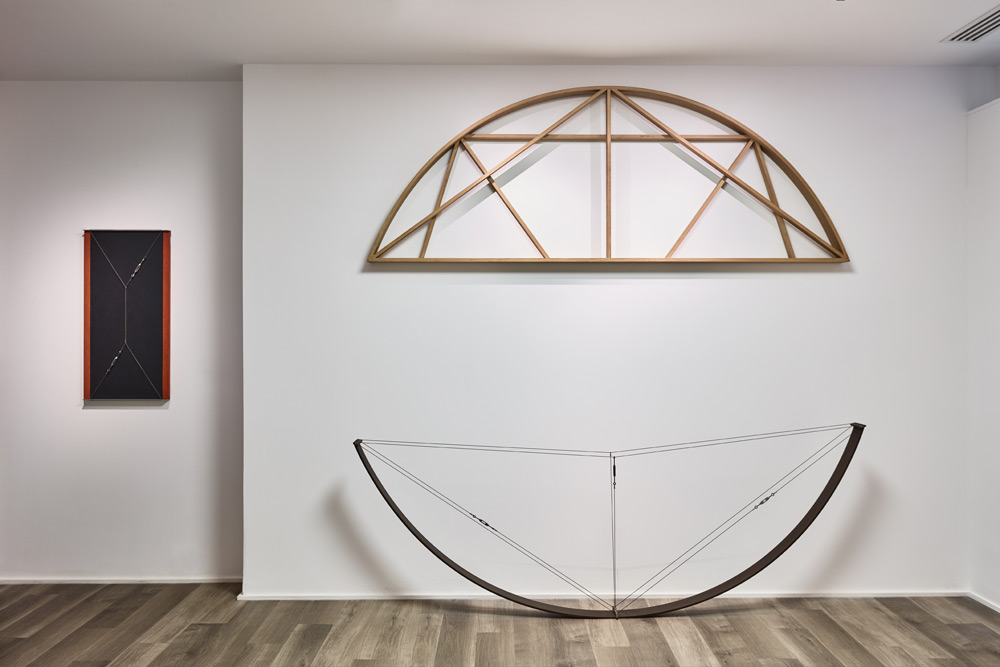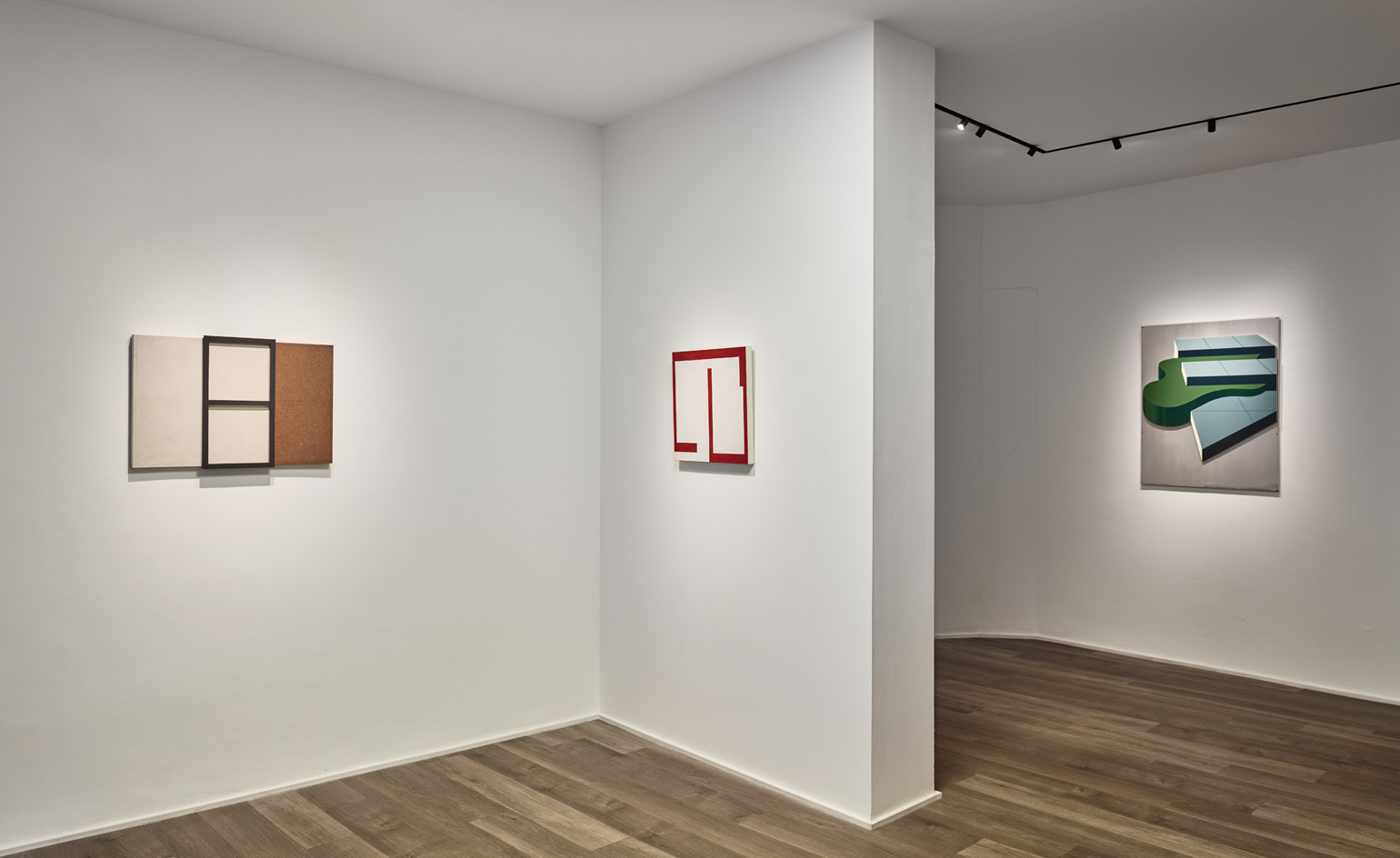Right angles: the father of Italian geometric art comes to London

Gianfranco Pardi was the father of geometry in Italy in the 20th century. Like Leonardo da Vinci, who first put applied geometry to art, Pardi was born in Milan, and his work bears the traces of da Vinci’s approach, interested in the meeting of painting, sculpture, architecture, mathematics and science.
Until now, Pardi has been somewhat of a well-kept Italian secret. The Associazione Culturale Gianfranco Pardi in Milan – founded to conserve the artist’s archive and define his contributions to Italian art – has established Pardi’s importance in his homeland, but now Cortesi Gallery in London is showing Pardi’s work in the first major monographic survey of his work outside Italy.

‘Sistema’, 1976
Focusing on works produced from 1968 to 1988, the earliest is his seminal Giardino Pensile (Roof Garden) from 1968, with its alien-green glazed aluminium, is a reflection on a dual concept of space as biomorphic and geometric, real and imagined, manmade and natural.
The work — on view in London — also coincided with the beginnings of Pardi’s ongoing collaboration with Giorgio Marconi at Studio Marconi (now operating as Fondazione Marconi) — who worked with avant-garde artists defining the artistic movements of their day, like Man Ray, Sonia Delaunay and Lucio Fontana.

From left, ‘Finestra’, 1977; ‘Casa’, 1981; and ‘Giardino Pensile’, 1969
Throughout the 1970s, Pardi continued to be inspired by architecture. In his series Architettura, he introduced structural steel bars and buffed metal surfaces to his canvases — radical in his day — creating works that combined painting, drawing and sculpture in one work, another radical idea at the time.
Architecture continued to be a source of wide-eyed fascination for the Italian artist. From these poetic ruminations on canvas in the 1970s, inspired by windows and ceilings, among other interior structures, Pardi moved outwards, and began to imagine whole structures — the home (Casa, 1981), the museum, (Museo, 1980) and even, a cinema (Cinema 02/1, 1987).

From left, ‘Sistema’, 1976; ‘Architettura’, 1973; and ‘Architettura’, 1970
This survey at Cortesi places Pardi’s work in the wider context of European art history — somewhere between abstraction, constructivism and neoplaticism. They’re also, as it happens, very pleasing to look at.
Receive our daily digest of inspiration, escapism and design stories from around the world direct to your inbox.

Left, Architettura, 1973. Right, Architettura, 1973

Left, Cinema 02/1, 1987. Right, Diagonale, 1982

Left, Cinema 02/1, 1987. Right, Architettura, 1973
INFORMATION
‘Gianfranco Pardi. Works 1968 – 1988’ is on view until 11 March. For more information visit the Cortesi Gallery website
ADDRESS
Cortesi Gallery
41–43 Maddox Street
London W1S 2PD
Charlotte Jansen is a journalist and the author of two books on photography, Girl on Girl (2017) and Photography Now (2021). She is commissioning editor at Elephant magazine and has written on contemporary art and culture for The Guardian, the Financial Times, ELLE, the British Journal of Photography, Frieze and Artsy. Jansen is also presenter of Dior Talks podcast series, The Female Gaze.
-
 A day in Ahmedabad – tour the Indian city’s captivating architecture
A day in Ahmedabad – tour the Indian city’s captivating architectureIndia’s Ahmedabad has a thriving architecture scene and a rich legacy; architect, writer and photographer Nipun Prabhakar shares his tips for the perfect tour
-
 You can now stay in one of Geoffrey Bawa’s most iconic urban designs
You can now stay in one of Geoffrey Bawa’s most iconic urban designsOnly true Bawa fans know about this intimate building, and it’s just opened as Colombo’s latest boutique hotel
-
 Pentagram’s identity for eVTOL brand Vertical Aerospace gives its future added lift
Pentagram’s identity for eVTOL brand Vertical Aerospace gives its future added liftAs Vertical Aerospace reveals Valo, a new air taxi for a faster, zero-emission future, the brand has turned to Pentagram to help shape its image for future customers
-
 Out of office: The Wallpaper* editors’ picks of the week
Out of office: The Wallpaper* editors’ picks of the weekFar from slowing down for the festive season, the Wallpaper* team is in full swing, hopping from events to openings this week. Sometimes work can feel like play – and we also had time for some festive cocktails and cinematic releases
-
 The Barbican is undergoing a huge revamp. Here’s what we know
The Barbican is undergoing a huge revamp. Here’s what we knowThe Barbican Centre is set to close in June 2028 for a year as part of a huge restoration plan to future-proof the brutalist Grade II-listed site
-
 Out of office: The Wallpaper* editors’ picks of the week
Out of office: The Wallpaper* editors’ picks of the weekIt’s wet, windy and wintry and, this week, the Wallpaper* team craved moments of escape. We found it in memories of the Mediterranean, flavours of Mexico, and immersions in the worlds of music and art
-
 Each mundane object tells a story at Pace’s tribute to the everyday
Each mundane object tells a story at Pace’s tribute to the everydayIn a group exhibition, ‘Monument to the Unimportant’, artists give the seemingly insignificant – from discarded clothes to weeds in cracks – a longer look
-
 Out of office: The Wallpaper* editors’ picks of the week
Out of office: The Wallpaper* editors’ picks of the weekThis week, the Wallpaper* team had its finger on the pulse of architecture, interiors and fashion – while also scooping the latest on the Radiohead reunion and London’s buzziest pizza
-
 Out of office: The Wallpaper* editors’ picks of the week
Out of office: The Wallpaper* editors’ picks of the weekIt’s been a week of escapism: daydreams of Ghana sparked by lively local projects, glimpses of Tokyo on nostalgic film rolls, and a charming foray into the heart of Christmas as the festive season kicks off in earnest
-
 Wes Anderson at the Design Museum celebrates an obsessive attention to detail
Wes Anderson at the Design Museum celebrates an obsessive attention to detail‘Wes Anderson: The Archives’ pays tribute to the American film director’s career – expect props and puppets aplenty in this comprehensive London retrospective
-
 Meet Eva Helene Pade, the emerging artist redefining figurative painting
Meet Eva Helene Pade, the emerging artist redefining figurative paintingPade’s dreamlike figures in a crowd are currently on show at Thaddaeus Ropac London; she tells us about her need ‘to capture movements especially’